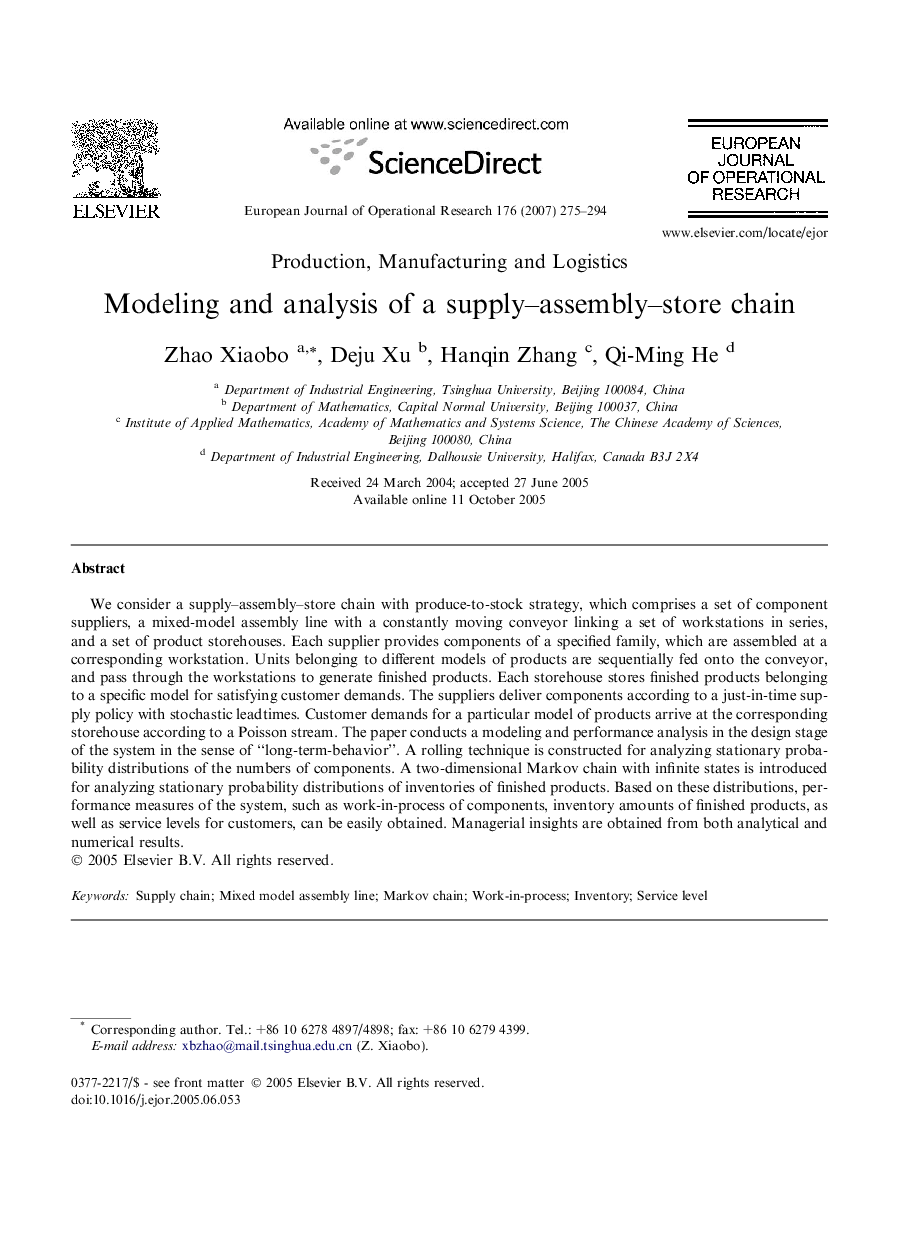| Article ID | Journal | Published Year | Pages | File Type |
|---|---|---|---|---|
| 479354 | European Journal of Operational Research | 2007 | 20 Pages |
We consider a supply–assembly–store chain with produce-to-stock strategy, which comprises a set of component suppliers, a mixed-model assembly line with a constantly moving conveyor linking a set of workstations in series, and a set of product storehouses. Each supplier provides components of a specified family, which are assembled at a corresponding workstation. Units belonging to different models of products are sequentially fed onto the conveyor, and pass through the workstations to generate finished products. Each storehouse stores finished products belonging to a specific model for satisfying customer demands. The suppliers deliver components according to a just-in-time supply policy with stochastic leadtimes. Customer demands for a particular model of products arrive at the corresponding storehouse according to a Poisson stream. The paper conducts a modeling and performance analysis in the design stage of the system in the sense of “long-term-behavior”. A rolling technique is constructed for analyzing stationary probability distributions of the numbers of components. A two-dimensional Markov chain with infinite states is introduced for analyzing stationary probability distributions of inventories of finished products. Based on these distributions, performance measures of the system, such as work-in-process of components, inventory amounts of finished products, as well as service levels for customers, can be easily obtained. Managerial insights are obtained from both analytical and numerical results.
